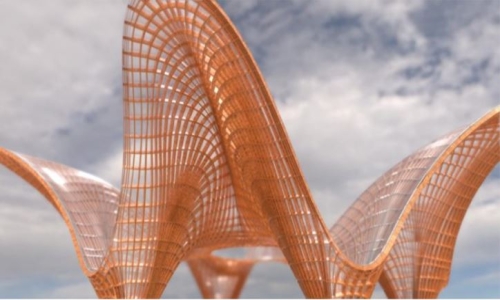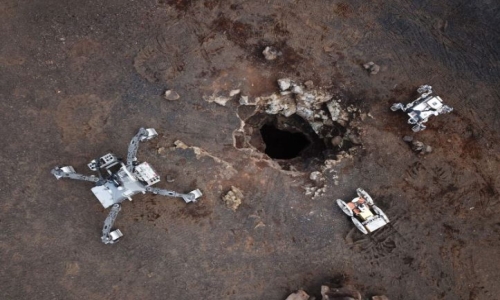


 10:50:2
10:50:2  2024-08-22
2024-08-22  1206
1206

Glittering blue sapphires, so suggestive of piercing cold, have remarkably hot origins deep beneath the surface.
For years, sapphires been turned up in volcanic deposits such as the Volcanic Eifel, where magma from Earth's mantle wells up into the crust over a long period of time, producing melts that are rich in sodium and potassium. Yet others are found in river beds, the robust crystals scoured clean of their source rocks.
While volcanism clear seems to play some kind of role, the exact provenance of these sapphires deep in our planet's ovens was something of a mystery, with geologists unable to determine with certainty whether they form solely in the mantle itself or are baked out of other minerals on the magma's ascent.
New research has found evidence that the azure gems can be forged in the fire and fury of volcanic upheaval as extreme processes heat and compress aluminum oxide within the crust into a crystalline form called corundum; the main mineral that makes up sapphires.
"One explanation is that sapphire in the Earth's crust originates from previously clayey sediments at very high temperatures and pressure and the ascending magmas simply form the elevator to the surface for the crystals," explains geologist and petrologist Axel Schmitt of Curtin University in Australia.
The researchers wanted to know whether this was the case, that the sapphires formed in the upper mantle or lower crust and were picked up and borne upward by magma pushing its way towards the surface from below. To do this, they had to study the sapphires themselves.
They collected 223 microscopic sapphires from Eifel, and subjected them to secondary ion mass spectrometry. They were looking at two different characteristics: inclusions of rutile and zircon trapped in the sapphires as they formed, and the ratios of oxygen isotopes in the aluminum oxide.
Now, sapphires are predominantly made up of aluminum oxide in the form of corundum, but other elements can become mixed in.
The deep blue hue that sapphires are known for comes from titanium and iron tinting the corundum, for example. Iron on its own makes yellow sapphires, and can also give us green stones. Chromium turns the corundum pink or red, and that's how we get rubies.
What's more, whole other minerals – such as rutile (titanium dioxide) and zicron – can get trapped within sapphires as they form.
Scientists can then use these minerals to determine when the crystal bloomed. That's because as these rutile and zircon form they incorporate uranium, which then undergoes radioactive decay at a known rate. Scientists can study the ratios of uranium to lead inside the rocks to determine how long that uranium has been decaying.
In addition to the uranium, he researchers studied the sapphires' oxygen isotope ratios. An isotope is a form of an atom with a different number of neutrons, and there were two isotopes relevant to the study. Oxygen 16, with 8 protons and 8 neutrons, is the lighter isotope, and the most abundant form of oxygen on Earth. Heavier oxygen-18 has 8 protons and 10 neutrons, and is more abundant in minerals from the deep crust than in minerals from the mantle.
By studying the ratios of these isotopes, the researchers were able to determine that the Eifel sapphires had oxygen ratios that could be traced both to the mantle and to the crust.
Meanwhile, the uranium-lead dating showed that they formed at the same time as volcanism that delivered them to the surface.
Taken together, this suggests that the sapphires formed in the upper crust, no more than 7 kilometers (4.3 miles) below the surface. Some of this formation was from mantle magma melting the rock as it moved through, transferring mantle isotope ratios to the corundum. Other sapphires formed as melt permeated the rock around it, triggering sapphire formation via heat, resulting in gems with isotope ratios more typical of a crustal origin.
"In the Eifel, both magmatic and metamorphic processes, in which temperature changed the original rock, played a role in the crystalization of sapphire," explains geoscientist Sebastian Schmidt of Heidelberg University in Germany.
Reality Of Islam |
|

A new NURBS

A research

Researchers
 9:3:43
9:3:43
 2018-11-05
2018-11-05
10 benefits of Marriage in Islam
 7:5:22
7:5:22
 2019-04-08
2019-04-08
benefits of reciting surat yunus, hud &
 9:45:7
9:45:7
 2018-12-24
2018-12-24
advantages & disadvantages of divorce
 11:35:12
11:35:12
 2018-06-10
2018-06-10
 6:0:51
6:0:51
 2018-10-16
2018-10-16
 8:15:37
8:15:37
 2023-02-16
2023-02-16
 9:42:16
9:42:16
 2022-10-19
2022-10-19
 5:58:12
5:58:12
 2021-12-18
2021-12-18
 7:0:55
7:0:55
 2022-05-17
2022-05-17
 11:11:59
11:11:59
 2023-02-01
2023-02-01
 7:6:7
7:6:7
 2022-03-21
2022-03-21
 2:2:13
2:2:13
 2022-10-08
2022-10-08
 5:41:46
5:41:46
 2023-03-18
2023-03-18
| LATEST |